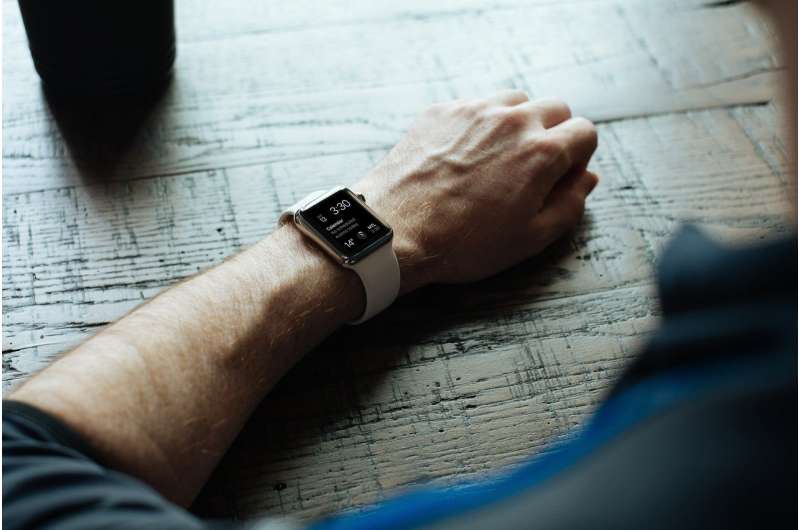
Wearable activity trackers that monitor changes in skin temperature and heart and breathing rates, combined with artificial intelligence (AI), might be used to pick up COVID-19 infection days before symptoms start, suggests preliminary research published in the open access journal BMJ Open.
The researchers base their findings on wearers of the AVA bracelet, a regulated and commercially available fertility tracker that monitors breathing rate, heart rate, heart rate variability, wrist skin temperature and blood flow, as well as sleep quantity and quality.
Typical COVID-19 symptoms may take several days after infection before they appear, during which time an infected person can unwittingly spread the virus.
Attention has started to focus on the potential of activity trackers and smartwatches to detect all stages of COVID-19 infection in the body from incubation to recovery, with the aim of facilitating early isolation and testing of those with the infection.
The researchers therefore wanted to see if physiological changes, monitored by an activity tracker, could be used to develop a machine learning algorithm to detect COVID-19 infection before the start of symptoms.
Participants (1,163 all under the age of 51) were drawn from the GAPP study between March 2020 and April 2021. GAPP, which started in 2010, aims to better understand the development of cardiovascular risk factors in the general population of Lichtenstein.
The AVA bracelet was chosen because its data were previously used to inform a machine learning algorithm to detect ovulating women’s most fertile days in real time, achieving 90% accuracy.
Participants wore the AVA bracelet at night. The device saves data every 10 seconds and requires at least 4 hours of relatively uninterrupted sleep. The bracelets were synchronized with a complementary smartphone app on waking.
Participants used the app to record any activities that could potentially alter central nervous system functioning, such as alcohol, prescription meds, and recreational drugs, and to record possible COVID-19 symptoms.
They all took regular rapid antibody tests for SARS-CoV-2, the virus responsible for COVID-19 infection. Those with indicative symptoms took a PCR swab test as well.
Everyone provided personal information on age, sex, smoking status, blood group, number of children, exposure to household contacts or work colleagues who tested positive for COVID-19, and vaccination status.
Some 127 people (11%) developed COVID-19 infection during the study period. There were no differences in background factors between those who did and didn’t test positive. But a significantly higher proportion of those who did said they had been in contact with household members/regulars or work colleagues who also had COVID-19.
Of the 127 who tested positive for COVID-19, 66 (52%) had worn their bracelet for at least 29 days before the start of symptoms and were confirmed as positive by PCR swab test, so were included in the final analysis.
The monitoring data revealed significant changes in all five physiological indicators during the incubation, pre-symptomatic, symptomatic and recovery periods of COVID-19 compared with baseline measurements. COVID-19 symptoms lasted an average of 8.5 days.
The algorithm was “trained” using 70% of the data from day 10 to day 2 before the start of symptoms within a 40-day period of continuous monitoring of the 66 people who tested positive for SARS-CoV-2. It was then tested on the remaining 30% of the data.
Some 73% of laboratory confirmed positive cases were picked up in the training set, and 68% in the test set, up to 2 days before the start of symptoms.
The researchers acknowledge that their results may not be more widely applicable. The findings were based on just a small sample of people, all of whom were relatively young—so less likely to have severe COVID-19 symptoms—-from a single national center, and who weren’t ethnically diverse.
What’s more, the accuracy (sensitivity) achieved was below 80%. But the algorithm is now being tested in a much larger group (20,000) of people in the Netherlands, with results expected later this year, they say.
While a PCR swab test remains the gold standard for confirming COVID-19 infection, “our findings suggest that a wearable-informed machine learning algorithm may serve as a promising tool for pre-symptomatic or asymptomatic detection of COVID-19,” they write.
Source: Read Full Article